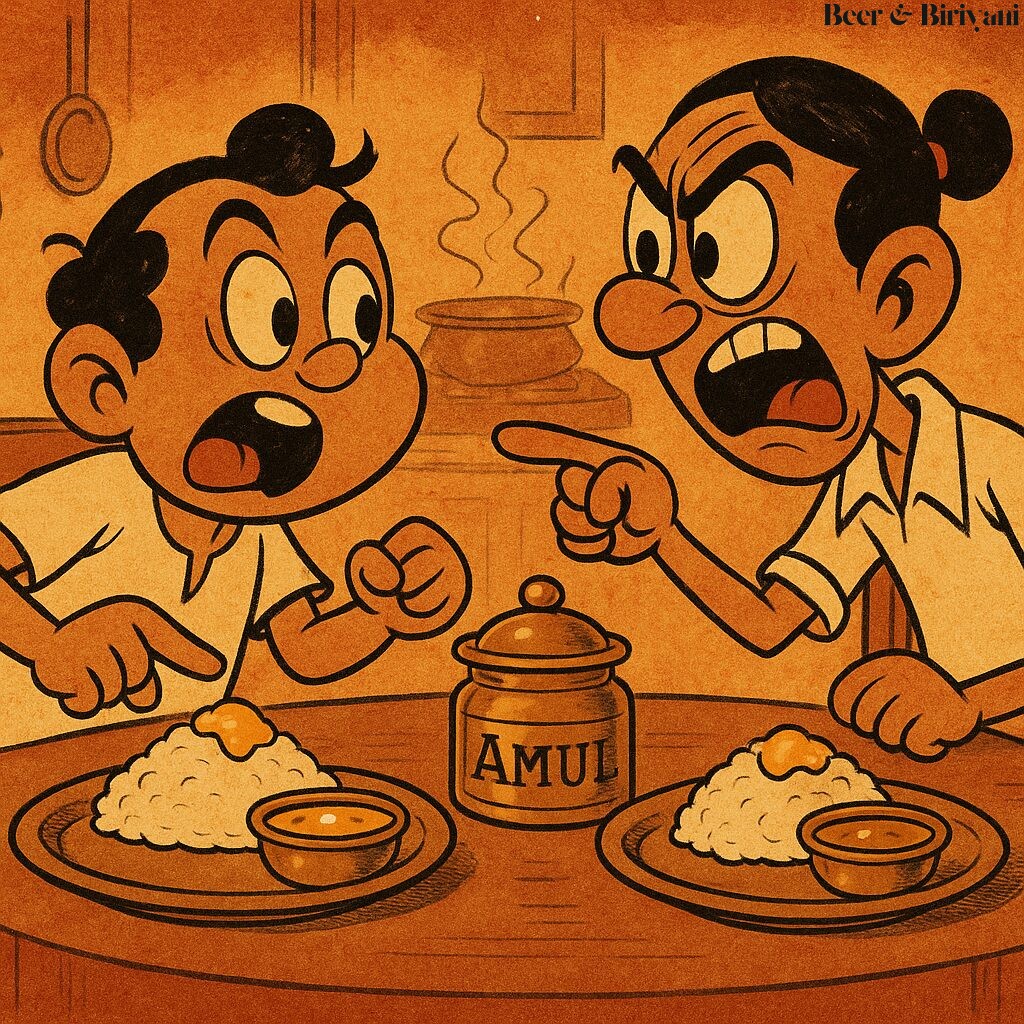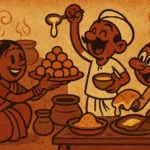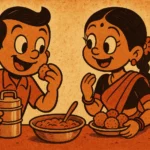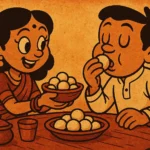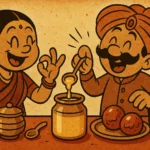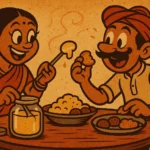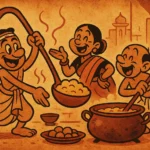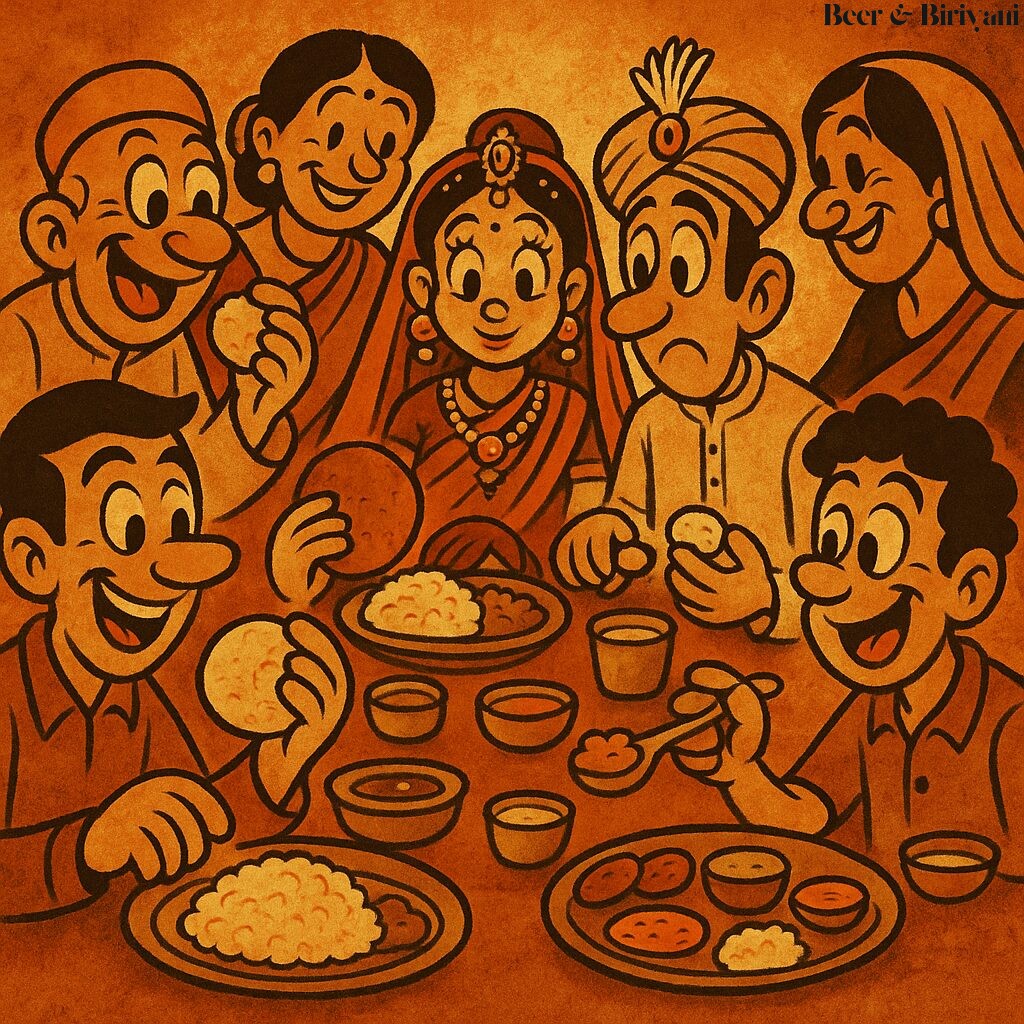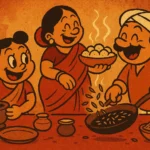The Katori With the Most Ghee: A Sibling Rivalry
In most families, sibling rivalry looks like board game wars or remote control disputes. In ours, it looked like dal. More specifically, like the tiny metal katori of toor dal sitting innocently beside a pyramid of rice—and whether that katori had one spoon of ghee or two.
It’s a strangely specific metric, I know. But in our Mumbai household, love was measured not in words but in the glisten of ghee floating on top of your dal. My mother never said “I love you” in so many words. She said it by sneaking a second spoon of homemade ghee into your katori when your brother wasn’t looking.
Ghee as Currency
Ghee, that molten gold of Indian kitchens, was many things. Medicinal. Sacred. Delicious. But at the dining table, it was also a deeply political substance. Its distribution could cause diplomatic incidents. My brother and I developed the reflexes of hawks and the territorial instincts of tigers when ghee was in play. One extra spoon in his katori? Outrage. A bit more smeared on my phulka? Cue the passive-aggressive glaring.
To be fair, we were both greedy. But only I knew how to lobby effectively. I lingered near the kitchen at the right time. I washed the steel tumblers without being asked. I’d casually say, “Ma, your dal tastes best with that thick ghee from the top, no?” And then, with dramatic nonchalance, stroll away. Moments later, I’d return to the table and, lo and behold, my katori would have that perfect molten cap—a silent bribe from the chef herself.
The Kitchen Cold War
My brother wasn’t idle. He retaliated in the only way he could: by exaggerating. “You gave him half the tin!” he’d yell. “There’s barely any left for the rest of us!” This was patently untrue. The tin in question was a dented old Amul box repurposed to store Ma’s ghee. It was always full. But he knew how to frame the narrative. He even staged a brief protest once—refusing dal altogether in a dramatic show of injustice. My mother ignored him, as only mothers can, and refilled my katori.
This went on for years. Through exams, crushes, breakups, and summer holidays. Our battles evolved—from ghee over dal to who got the bigger share of gulab jamuns on Diwali. But the essential script never changed: the kitchen was the theatre, and Ma was the unwilling director of our food-fueled sibling drama.
The Weaponization of Serving Order
Serving order mattered, too. If I was served first, he’d raise an eyebrow. If he was served last, I’d smirk. There was no peace. Only temporary ceasefires called when guests were present. Even then, we’d signal each other under the table—eyes locked on the ghee tin like gamblers at a poker game.
The thing is, this wasn’t just about gluttony. It was about attention. About knowing where you stood in the shifting tides of Ma’s mood. Ghee was just the visible part. The subtext was always: who’s being favored today? Who made her laugh? Who got scolded less? Food became both comfort and scoreboard.
Rewriting the Script
These days, I live in Austin. My brother’s in Pune. We talk more like friends now. Still pull each other’s legs, but the sting is gone. A few months ago, he visited, and I made dal—simple, homesick dal with store-bought ghee. When I served him, he paused, peered into the katori, and said, “Only one spoon?”
We both burst out laughing. I added more. He didn’t protest.
It struck me then how food fights—especially the absurd ones—carry more tenderness than we realize. That rivalry was never about food. It was about wanting to be seen. And now, with the older-wiser lens that distance provides, I see that Ma always saw both of us. She just knew when to use silence and when to use ghee.
The Legacy of the Katori
I still use metal katoris. Bought a set when I moved here. They’re lighter and shinier than the heavy-bottomed ones we had in Mumbai, but they carry the same gravity. When I make dal for my son—who is, so far, blissfully unaware of how ghee can be a weapon—I add a spoon to his katori with instinct. And maybe, on the days he eats without fuss, I add a second spoon without realizing.
Food has memory. Not just in its flavors, but in its rituals. Who gets served first. Who gets the burnt edge of the dosa (the best part, obviously). Who gets the last shakarpara. The rituals don’t always survive, but the feeling does. It lingers in the kitchen, in the warmth of a tin of ghee, in the unspoken “I see you” that comes with every lovingly prepared plate.
Peace, Finally, with a Side of Dal
I haven’t fought over ghee in years. I still count spoons, though—not out of scarcity, but habit. And when my brother visits again, I’ll make sure his katori is brimming. Not as an apology. Just as proof that I remember. That we were loved—equally, chaotically, and always through food.
Born in Mumbai, now stir-frying feelings in Texas. Writes about food, memory, and the messy magic in between — mostly to stay hungry, sometimes just to stay sane.

